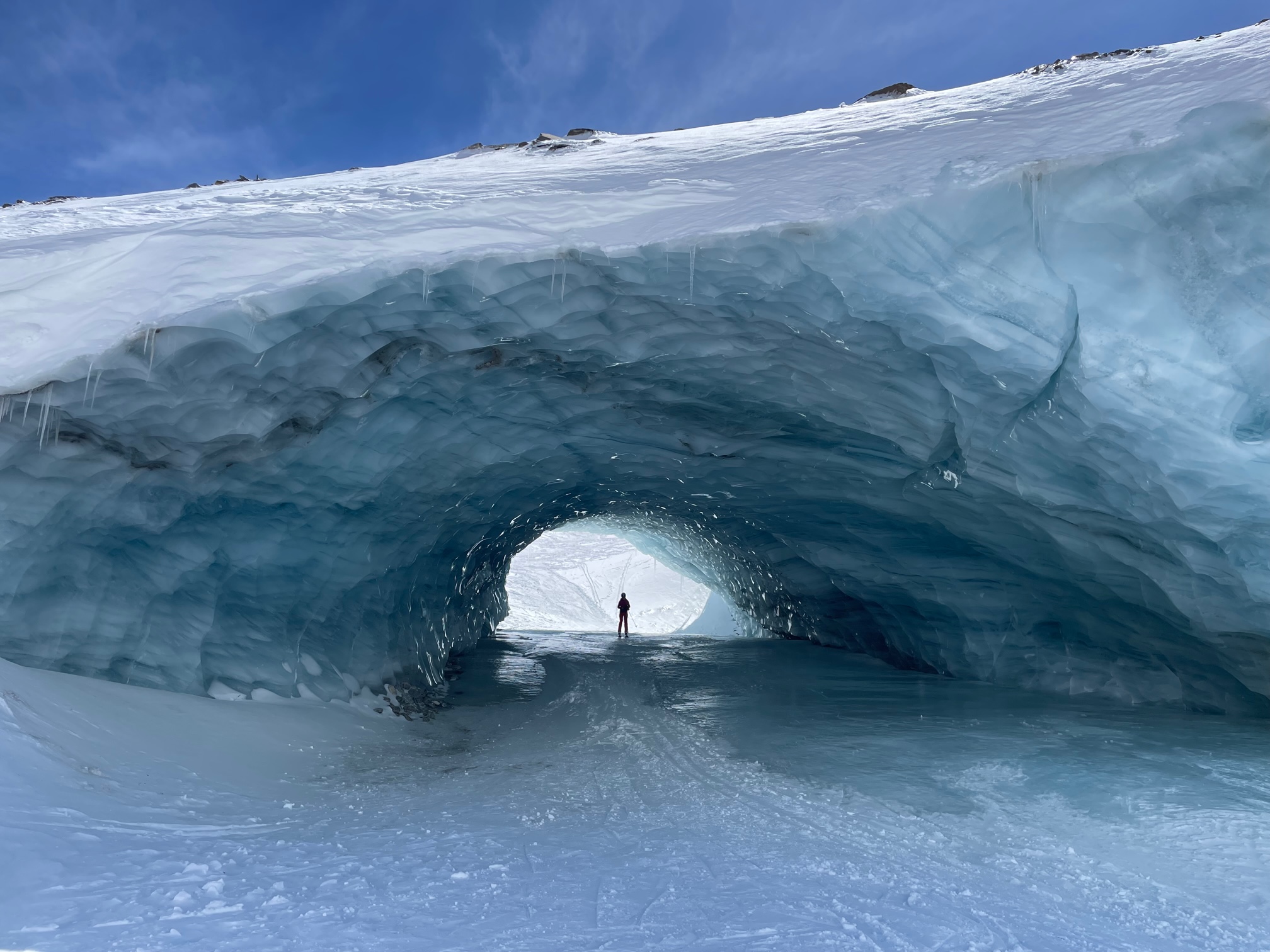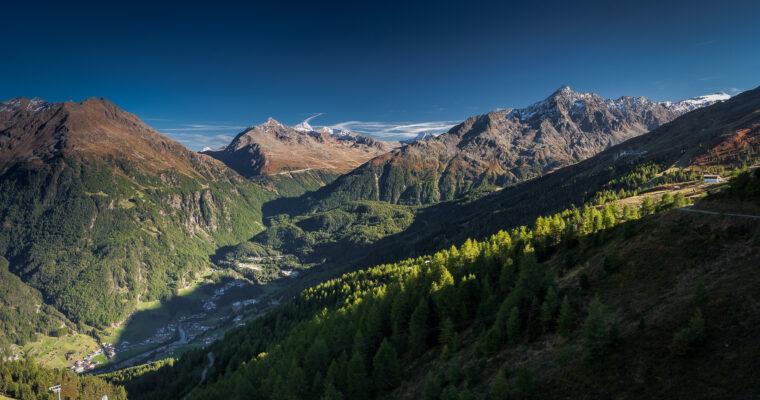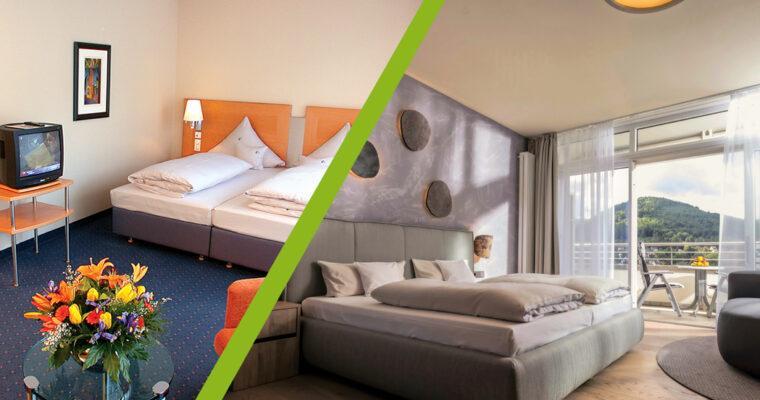Glaciers are considered “ambassadors of the climate crisis” and, as recent studies show, they are disappearing (even) faster than expected. In the Swiss resort town of Zermatt on the Matterhorn, you can witness this firsthand. Today, we’ll take a look at the basic facts to help you understand what glacier retreat means and implies. Furthermore, after the famous Ötzi, more ice mummies are expected to emerge in Austria’s Ötztal valley.
Global warming is causing the glacier retreat
Winter is supposed to be over in April. But not in the high Alps above 3,000 meters: There is often snow as late as May, and the “eternal ice” of the glaciers lasts well into the summer. But the glaciers are not eternal. There’s a steady glacier retreat. This means the ice fields formed by melting are getting smaller and smaller.

Over 8000-year-old larch tree found in glacier forefield
A few years ago (2015), Fabienne Anthamatten from our Green PearlsⓇ partner, the Hotel Bella Vista Zermatt, made an interesting discovery. She found the trunk of a larch tree. As the hotel owner has long been interested in old wood, she immediately realized that this trunk must be very old. What’s more, there are currently no trees anywhere near the site on the Gorner Glacier tongue. So, she contacted ETH Zurich to determine the age of the larch. Lo and behold, the tree grew here about 8,370 years ago!
The fact that it has only been found now is because the wood was preserved in the ice of the Gorner Glacier – until it continued to shrink, revealing things that had been hidden for thousands of years. The Gorner Glacier reached its peak in the 19th century. It has been shrinking ever since.
A brief foray into global warming
Our planet has been in a warm period for about 10,000 years, following an ice age that lasted about 100,000 years. During this time, most of the northern hemisphere was covered by glaciers. Those that you can (still) see today are the last remnants of this ice age.
Scientists are still speculating about what exactly triggered the climate change at that time. According to the German Ministry of Education and Research’s World of Physics, a warming of the water in the southern hemisphere may have been responsible. As it warmed, it released more and more carbon dioxide, which accumulated in the atmosphere and caused further heating, leading to the retreat of the glaciers. So even then, carbon dioxide, a greenhouse gas, was playing a major role in global warming.
The man-made greenhouse effect
With industrialization, which began around 1800/1850 (imagine that – only about 200 years ago!), greenhouse gas emissions have increased enormously. According to the German Federal Ministry for Economic Cooperation and Development, this is mainly due to:
- Deforestation
- Burning coal, gas, and oil to produce energy
- Factory farming of animals
For glaciers, the Paris climate agreement came too late
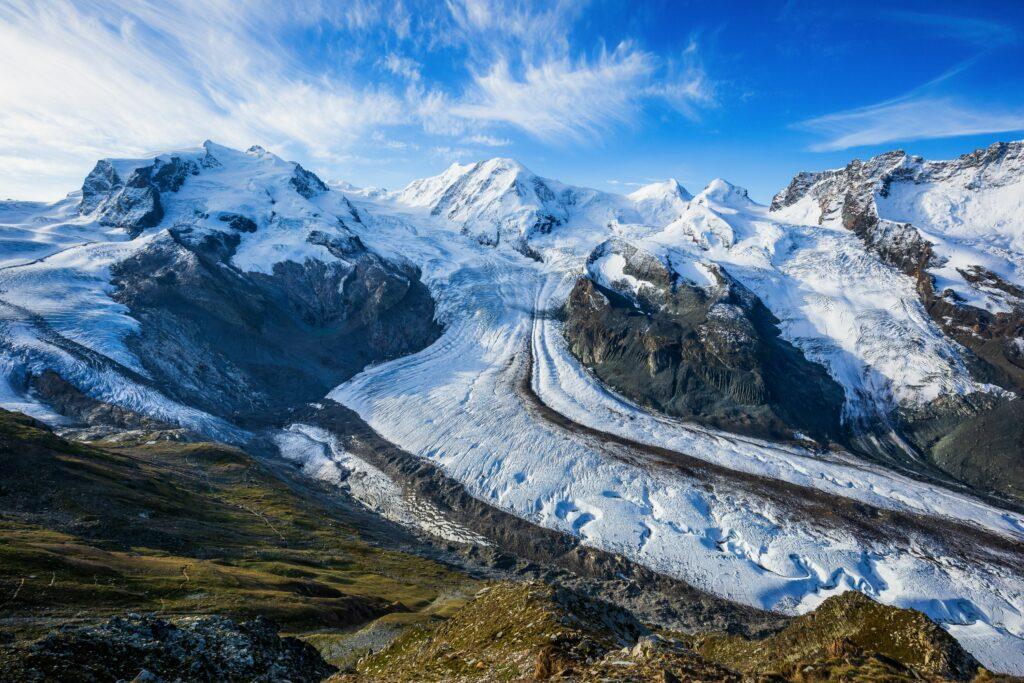
According to calculations by the German Federal Environment Agency, the Earth’s surface temperature has warmed by 1.3°C between 1880 and 2023 (i.e. from industrialization to the present). In 2015, an agreement was reached at the Paris Climate Conference that requires all countries to reduce their greenhouse gas emissions. The goal is to keep global warming below 2°C and, if possible, to stop it at 1.5°C.
However, this goal already seems unlikely, almost impossible. And even if there is “only” a 1.5°C rise in global temperatures, according to the head of the Swiss Glacier Monitoring Institute, Matthias Huss, this means that by the year 2100 (your children may live to see it) only 200 to 300 glaciers will be left of the current 1400. (In 1973, Switzerland still had 2150 glaciers. More than half of them have disappeared since 1930).
The importance of glacier retreat is demonstrated by the fact that the IPCC (Intergovernmental Panel on Climatic Change) has ranked glaciers as the most important climate indicator.
What are the consequences of glacier retreat?
- Water scarcity: Glaciers are the largest freshwater reservoirs on Earth. They currently store about 70% of the world’s freshwater and feed many of the lakes and rivers from which we draw our drinking water.
- Sea level rise: The melted water ends up in the oceans. This not only makes it 1) salty (and therefore unusable as drinking water), but also 2) leads to sea level rise, and therefore 3) the disappearance of islands and coastal areas.
Glacier friendly travel
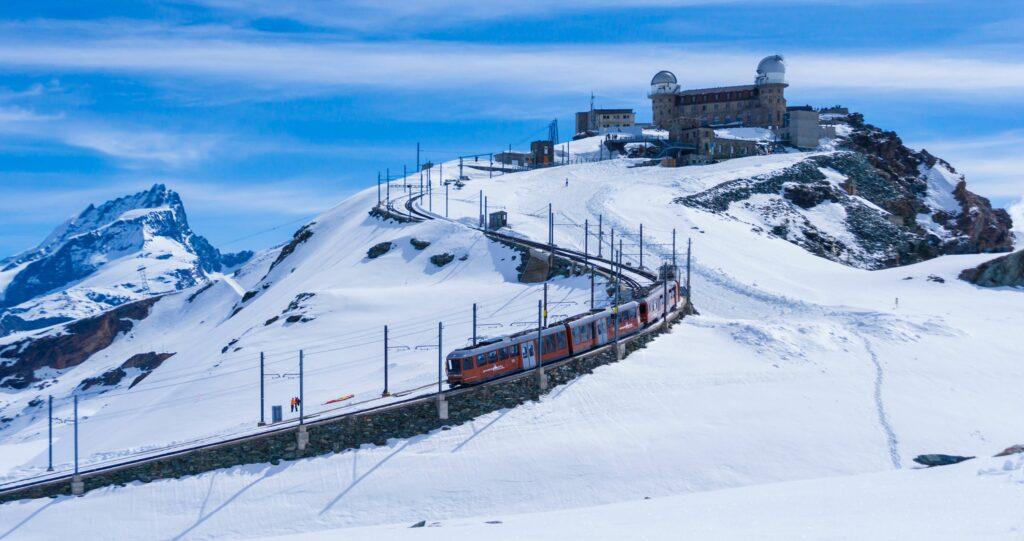
Now that we’ve brushed up our knowledge, maybe you’ll get the urge to visit these special ice sheets – before they disappear completely… And, of course, in the most climate-friendly way possible (which, as we have learned, means glacier-friendly)
The best way to reduce your carbon footprint is to travel by train or bus. Either way, you can easily reach the car-free village of Zermatt.
An excursion to the Gorner Glacier near Zermatt
The Gorner Glacier is the second largest glacier in the Alps and is (still) 12.9 kilometers long. It is especially interesting because of its location in the middle of the famous four-thousanders of the Monte Rosa massif.
From Zermatt, the Gornergrat Railway takes 35 minutes and offers a breathtaking 360-degree panorama of the Matterhorn, Liskamm and Monte Rosa Group. You can even see the Gorner Glacier and the Grenz Glacier merge into a single sheet of ice.
Accompanied by a mountain guide, you can cross the Gorner Glacier on your way to the Monte Rosa Hut. As an alternative, the Gornergrat Railway recommends a hike from the Hohtälli ridge down to the glacier.
Glacier Palace
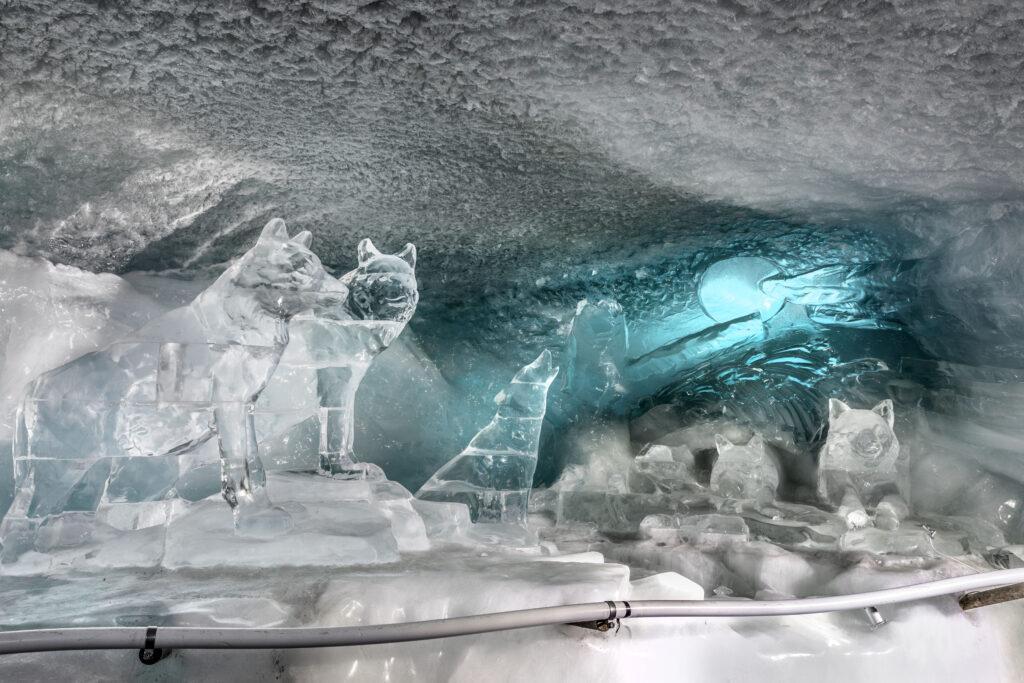
The Glacier Palace is an experience in itself. Here you descend 15 meters into the glacier and find yourself in the middle of a wondrous ice world with ice banks and ice sculptures regularly created and maintained by ice artists. There is also an ice slide for children.
Sustainable accommodation in Zermatt
We recommend the Hotel Bella Vista Zermatt. Here you can see Fabienne Anthamatten’s 8,000-year-old larch tree on display in the spa area. The family-run hotel has a cozy atmosphere with a fireplace in the lobby, a Swiss stone pine spa and a terrace with views of the Matterhorn. Breakfast, lunch snacks, afternoon cakes and dinner are all organic. Instead of exotic ingredients flown in from overseas, you will find local Swiss produce.
By the way, if you arrive by train, you can look forward to first class seats from Visp to Zermatt 😉 The hotel will upgrade you from second to first class so you can relax on the train!
Another place we recommend is the CERVO Mountain Resort. The resort consists of several wooden buildings, 3 restaurants, a pool, a wellness area, a climbing wall and a gym. Everything has a natural and unique style that has won several design awards. If you wish, you can also book a CO2-compensated stay. The amount you pay to MyClimate will be matched by CERVO.
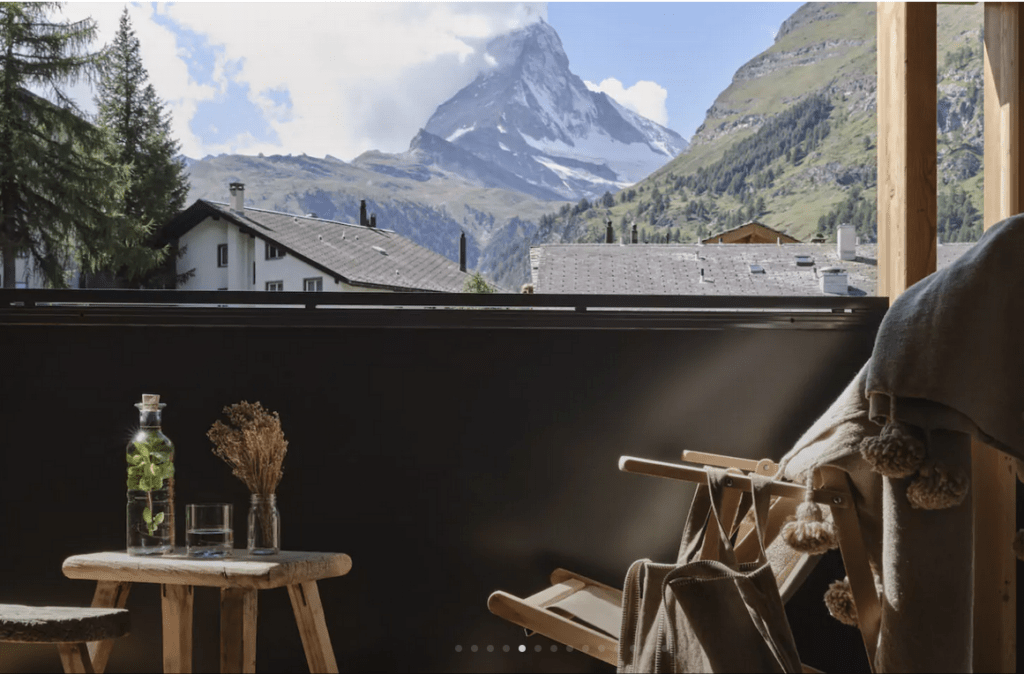
Glacier adventure tour in summer with crampons and climbing harness
If you want to try a real adventure tour on the ice this summer, there is one on the Swiss Fee Glacier above Saasfee. The glacier adventure tour takes around 3 to 4 hours, and you climb secured to the rope of the mountain guide. In Saas Fee itself, the Waldhotel Fletschhorn awaits you as sustainable accommodation. It is known for its superb cuisine, and its commitment to sustainability.
Researchers expect ice mummies
Ice mummies are even more spectacular than old wood. Discovered in 1991, Ötzi was more than 5,000 years old and reveals a lot about life back then. It was not until 2022 that a new study on Ötzi was published, this time by glaciologists at the Austrian Academy of Sciences (ÖAW). “In 1991, the world looked very different from a glaciologist’s point of view. There was only one year with extremely strong melting up to the summit regions. Today, this has become normal,” study author Andrea Fischer was quoted as saying by the Austrian newspaper Kurier. The researcher believes that because of the glacier retreat more ice mummies will be discovered soon. The important thing is to find them in time, which is why potential sites are already being monitored.
The original Ötzi is kept in the South Tyrol Museum of Archaeology in Bolzano. You can also visit the Ötzi site in the Ötztal Valley near Sölden at an altitude of 3,200 meters above sea level. LENI MOUNTAIN Apartments & Chalet is located just above the center of Sölden, where you can relax after your excursions. Also in Sölden, the apartments at The Peak Sölden offer cozy accommodation close to hiking trails, cycling routes, and ski slopes. It’s also not far from the glacier. It’s also not far from here to the glacier. Just follow the Ötztal Glacier Road (there is also a bus service) and drive about 20 minutes to the Rettenbach and Tiefenbach Glaciers. Keep your eyes open – who knows what you’ll find …
Save this article to help make this important topic more visible!


